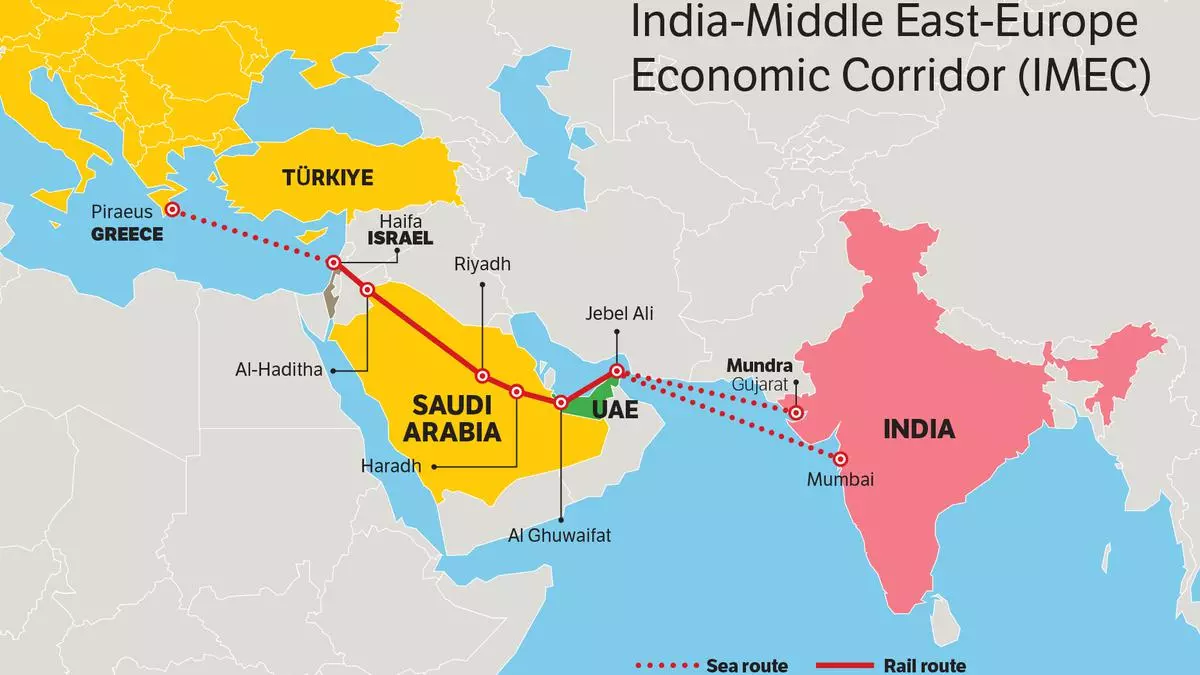Roadmap for Answer Writing 1. Introduction Contextualize the Debt Crisis: Briefly introduce the global debt situation, especially in developing countries. Highlight the growing concern about the rising debt levels in the aftermath of the COVID-19 pandemic and the economic strains that have ...
Model Answer India's accession to the Ashgabat Agreement in 2018 is a strategic move that holds significant implications for its foreign policy in Central Asia, a region increasingly influenced by external powers such as Russia, China, and the United States. Countering China’s Influence China's BeltRead more
Model Answer
India’s accession to the Ashgabat Agreement in 2018 is a strategic move that holds significant implications for its foreign policy in Central Asia, a region increasingly influenced by external powers such as Russia, China, and the United States.
Countering China’s Influence
China’s Belt and Road Initiative (BRI) has established a strong presence in Central Asia, which poses a challenge to India’s interests. By joining the Ashgabat Agreement, India can counterbalance China’s influence and assert its role in the region, promoting a multipolar balance of power.
Enhanced Connectivity
The Ashgabat Agreement aims to improve connectivity among member countries, facilitating trade and commerce. This enhanced connectivity is crucial for India as it opens new trade routes to Central Asia, allowing for increased economic engagement and cooperation.
Access to Energy Resources
Central Asia is rich in natural resources, particularly oil and gas. India’s participation in the Ashgabat Agreement could provide better access to these vital energy resources, which are essential for meeting India’s growing energy demands.
Strategic Importance
The geographical location of Central Asia, situated between Europe and Asia, makes it strategically significant. India’s involvement in the region through the Ashgabat Agreement can help counterbalance the influence of Russia and China, reinforcing India’s strategic interests.
Strengthening Ties with Member Countries
The agreement includes key Central Asian nations such as Kazakhstan, Uzbekistan, and Turkmenistan. By engaging with these countries, India can strengthen bilateral ties, fostering cooperation in various sectors including trade, security, and cultural exchanges.
Challenging Pakistan’s Influence
Historically, Pakistan has maintained close ties with Central Asian countries. India’s entry into the Ashgabat Agreement could challenge this influence, allowing India to establish stronger connections in the region and promote its own interests.
Conclusion
India’s accession to the Ashgabat Agreement is a significant step towards enhancing its connectivity and economic ties with Central Asia, countering China’s influence, and strengthening its geopolitical position in a region of growing importance.
See less
 India’s relationship with Europe has become a key component of its international strategy. As India seeks closer ties with European countries, it faces the challenge of dealing with the continent’s diverse and sometimes contradictory landscape. This engagement is not solely about economic gains or political alliances; it involves understanding and addressing the unique complexities that define Europe. Let’s delve into the different aspects of this relationship in a more detailed and straightforward manner.
India’s relationship with Europe has become a key component of its international strategy. As India seeks closer ties with European countries, it faces the challenge of dealing with the continent’s diverse and sometimes contradictory landscape. This engagement is not solely about economic gains or political alliances; it involves understanding and addressing the unique complexities that define Europe. Let’s delve into the different aspects of this relationship in a more detailed and straightforward manner.
Model Answer The growing debt crisis in developing countries has significant implications for their economic stability and development. As of 2022, global public debt reached a record USD 92 trillion, with developing countries owing nearly 30% of this total. From 2010 to 2021, their public debt incrRead more
Model Answer
The growing debt crisis in developing countries has significant implications for their economic stability and development. As of 2022, global public debt reached a record USD 92 trillion, with developing countries owing nearly 30% of this total. From 2010 to 2021, their public debt increased from 35% to 60% of GDP. The consequences of this rising debt burden are profound.
Impact on Welfare Policies
The increasing debt burden limits investments in essential welfare services, such as education and healthcare, affecting billions of people. In 48 countries, the lives of 3.3 billion people are directly impacted by underinvestment in these sectors due to the large portion of national budgets allocated to servicing debt. For instance, the debt servicing costs are consuming resources that could otherwise be used for public welfare.
Reduced Investment in Sustainable Development
Developing countries face much higher interest rates on their loans compared to developed nations. For example, African countries pay rates that are four times higher than the United States. This reduces their ability to invest in long-term sustainable development projects, hindering progress towards achieving the UN’s Sustainable Development Goals.
Widening the Rich-Poor Gap
The debt crisis exacerbates inequality between rich and poor countries. In 2021, one-third of the public spending of the poorest countries went toward debt service payments, while only 21% of the richest countries’ budgets were allocated for this purpose. This economic strain stifles growth and deepens global inequalities.
Social Unrest and Political Instability
In response to high debt levels, countries often implement austerity measures such as spending cuts and tax hikes. These measures increase poverty and unemployment, fueling social unrest and political instability. For example, Sri Lanka’s debt crisis triggered widespread protests against its President, highlighting the social costs of austerity.
Spillover Effects and Reversal of Socio-Economic Development
The debt crisis in one country can have regional consequences, as seen in the Latin American debt crisis (1970-89) and the Asian Financial Crisis (1990-2001). Additionally, sovereign defaults can lead to catastrophic economic costs, with affected countries losing up to 8% of GDP within three years and a significant rise in poverty rates. These defaults can reverse decades of socio-economic progress.
Conclusion
In light of these challenges, debt transparency and better management practices are essential for ensuring that developing countries can borrow sustainably and maintain long-term economic stability.
See less